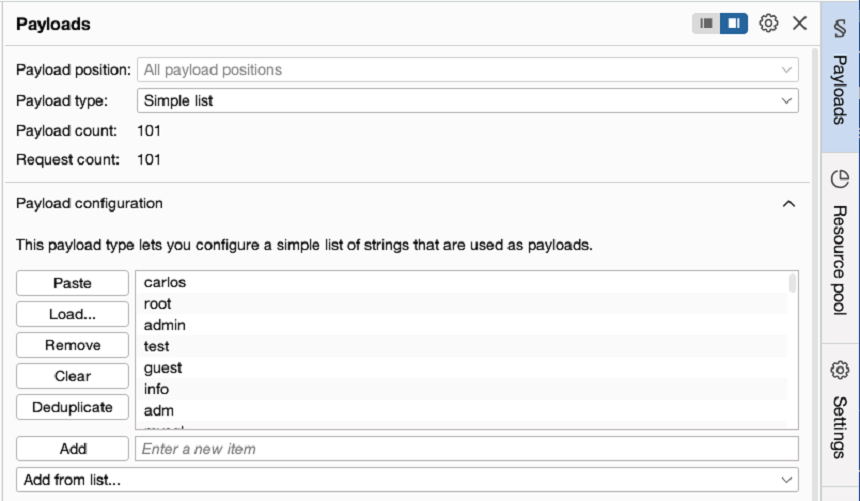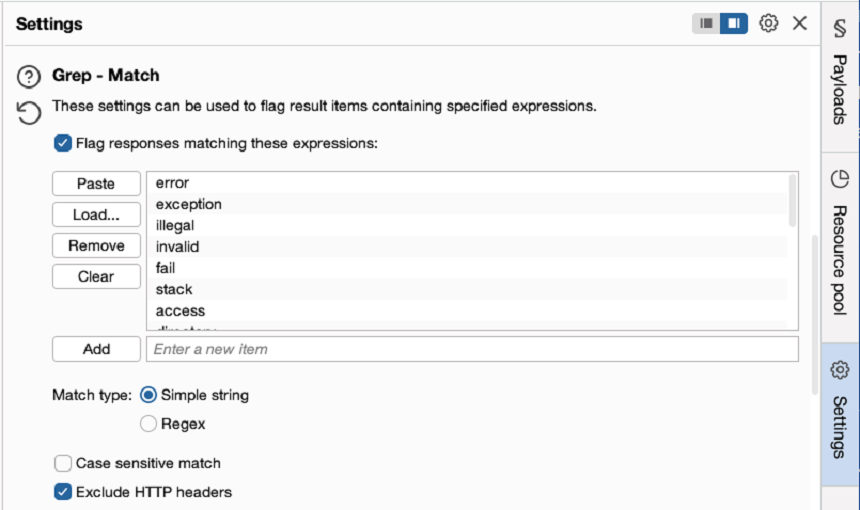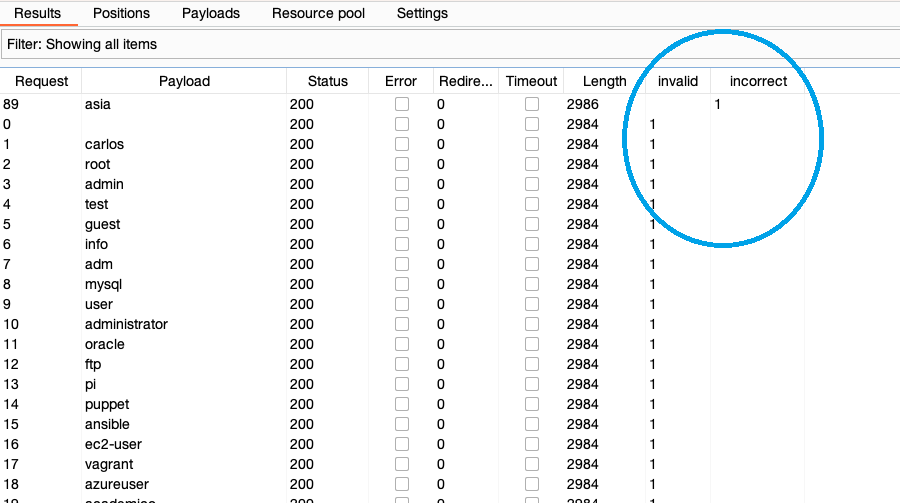ProfessionalCommunity Edition
Fuzzing for vulnerabilities
-
Last updated: December 16, 2025
-
Read time: 1 Minute
You can use Burp Intruder to identify input-based vulnerabilities by analyzing the attack results for error messages and other exceptions.
Related pages
For more information on input-based vulnerabilities, see:
Given the size and complexity of today's applications, manually fuzzing for vulnerabilities is a time-consuming process. You can automate the process with Burp Intruder.
Step 1: Set the payload positions
Set payload positions at the values of all request parameters.
Step 2: Set the payload type
Select the simple list payload type, then add a list of attack strings under Payload configuration.
You can use your own list of attack strings, or one of Burp's predefined payload lists of common fuzz strings if you're using Burp Suite Professional. For more information, see Predefined payload lists.

Step 3: Set the match grep
Configure the Grep - Match settings to flag responses that contain various common error message strings. For more information, see Burp Intruder attack settings.
You can use your own expressions, or use the default items.

Step 4: Analyze the results
Sort the attack results by the match grep expressions to identify any results with the common error message strings.

Note
To test a large number of requests with the same payloads and match grep configuration, you can save or copy the tab's configuration. For more information, see Configuring Burp Intruder attacks.


